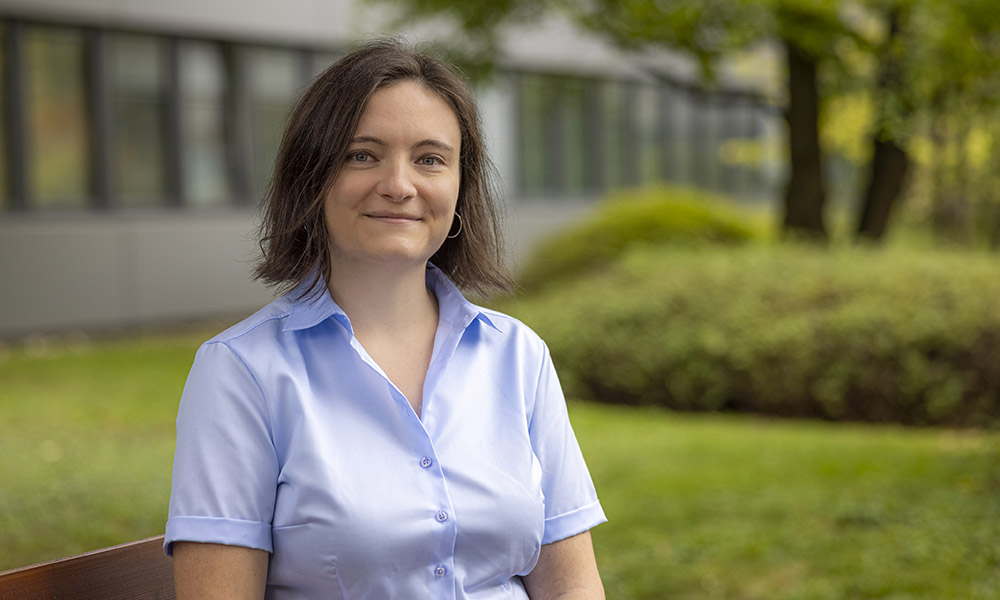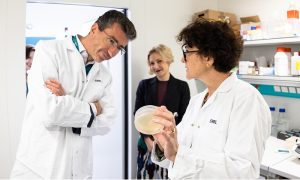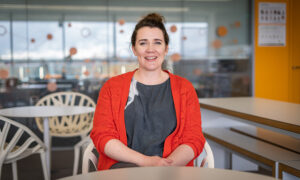
Welcome: Svetlana Dodonova
One of EMBL’s newest structural biologist hopes to learn more about the organisation of genetic material across the tree of life

One of EMBL’s newest group leaders, Svetlana Dodonova is interested in the structural organisation of genetic material across the tree of life. She uses structural biology approaches to study archaea in particular – the one-celled organisms that share some of the basic genome organisation principles with eukaryotes, but also have unique adaptive features. Dodonova has joined the Structural and Computational Biology unit and tells us why cryo-electron microscopy (cryo-EM) is important for understanding the link between archaea and ourselves – and how Russian riverside fossils were her gateway to becoming a scientist.
1. When did you first get introduced to something science-y?
As a kid I used to spend my summers in the countryside. Our summer house is right next to the longest river in Europe, the Volga River in Russia. I spent my days on the beach, swimming with my friends, and playing with interesting stones and pebbles – some of which had particular spiral or conical shapes. I soon found out they were fossils – some of them at least 150 million years old, which was quite mind blowing at the time. I think I learned the names of ammonite and belemnite fossils from the Jurassic period before I even went to school. This was perhaps what sparked my interest in evolution in the first place.
2. How do you describe your research?
Life is based on information, and there is correlation between organism complexity and the amount of genetic information. This information on the first level is mostly stored in the form of DNA and needs to be well organised inside the cell to be read or copied when it’s needed. Think of an old audio cassette: no one would ever find their favourite song in the chaos of a pile of magnetic tape from multiple albums. That’s why we need separate cassettes, the spools inside those cassettes, and the tape neatly rolled around those spools to help organise the music. In a way, our lab wants to know the origin of our own genetic ‘spools’ and ‘cassettes’ composed of DNA and proteins and how they look and work. We can learn about them by studying the structural organisation of the genome in organisms called archaea.
3. Why archaea?
They help us learn about basic principles of genome organisation, and they are fascinating because they are similar to bacteria in some ways, but their information processing apparatus is more related to eukaryotes. Eukaryotes, according to current models, evolved from a symbiotic relationship between an archaea host and bacterium, where the archaea contained the central genetic pool and the main genetic information processing apparatus. Thus, archaea can help us understand how our own cells store information and how this system has evolved. Moreover, we will learn more about the genomic organisation and biology of archaea themselves. We know today that they aren’t just living in extreme environments like salt lakes and hot springs, as originally thought, but actually surround us everywhere, including in our own digestive tracts.
4. What do you find most interesting about your research?
The way DNA and proteins are organised into chromatin is very complex. We still have a lot to learn. Structural biology approaches – specifically cryo-EM that we use to study these questions – is very cool as it provides a wealth of high-resolution information and can be applied to complex assemblies with varying shapes, like chromatin. Moreover, when cryo-EM is applied to cells – it lets it retain the ultrastructural context. This means that we don’t just learn about the tape and the spools that organise the genetic information, but we can also see the details of the surrounding environment. Cryo-EM is developing rapidly, so it’s exciting to take advantage of recent inventions.
5. How did you first get interested in this aspect of science?
I first engaged with cryo-EM when I did my PhD in John Briggs’ lab at EMBL. It was great to learn and apply this method together with other techniques to very complex biological assemblies, such as those involved in intracellular trafficking. The only way to study the structure of these assemblies was cryo-electron tomography. Next, I moved into the field of structural biology of chromatin during my postdoc in the Cramer department at the Max Planck Institute for Biophysical Chemistry in Göttingen. The more I engaged with eukaryotic chromatin architecture, the more I wondered how such a complex system evolved to perform so many functions. Consequently, my eyes would always turn towards archaea. Studying chromatin organisation in archaea can answer a lot of our evolution-relation questions.
6. What excites you most about being at EMBL?
I am really excited to start my own group and interact with multiple experts in different areas. This collaborative, friendly spirit makes EMBL a great place to do science. I am also excited about the new Imaging Centre right next door. It offers the latest cryo-EM and light microscopy technology and will be a great hub for interacting with structural biology experts.
7. How do you decompress after a hard day at work?
After a hard day of work I like to listen to music (sorry, neighbours), and from time to time, I watch shark movies with very low IMDb ratings.
8. What is the book or movie you are most likely to recommend to people you meet?
I really love the Lord of the Rings movies and books. Pretty sure there are also some interesting archaea living near the volcano Orodruin in the Black Land of Mordor.
9. Name three famous people — dead or alive — with whom you would enjoy sharing coffee or cocktails.
I’d like to meet Marie Curie and Rosalind Franklin because they were so brilliant and are such an inspiration. I’d like to also have some drinks with a well-known Russian lyric poet Esenin from the beginning of the 20th century, who apart from writing great poetry, sure knew how to party.


